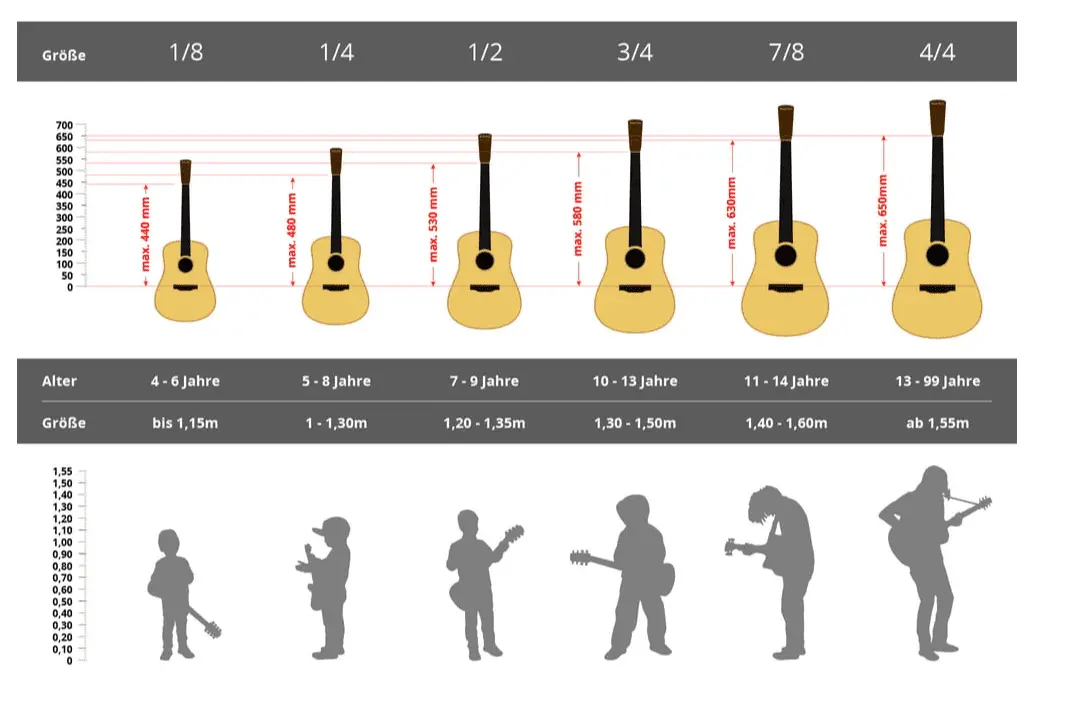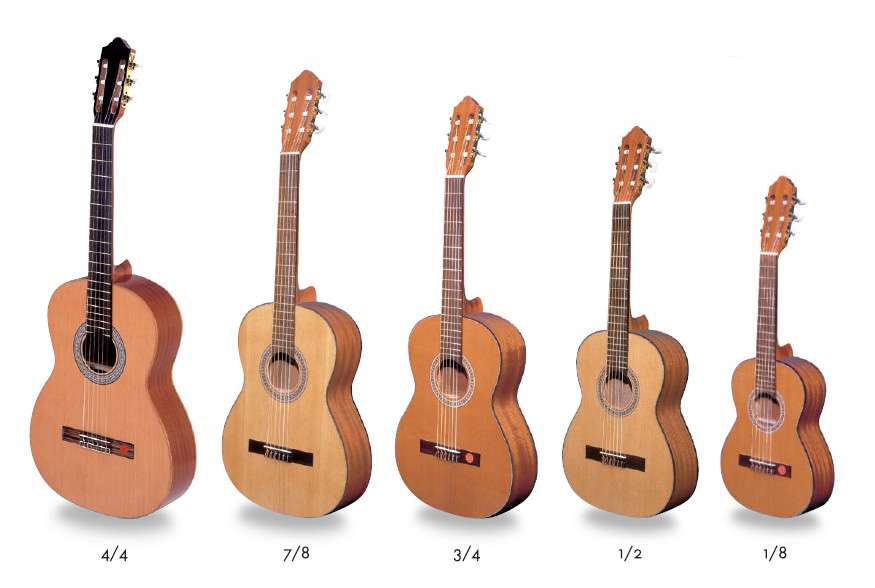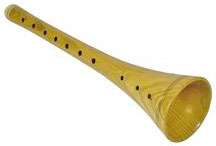
About guitar sizes
Contents
Until a person has become better acquainted with the world of the guitar, it may seem to him that all instruments are the same and differ only in the color of lacquer and wood. This happens because full-size guitars catch the eye more often than smaller ones.
However, without the size range of guitars, it would be difficult to organize a full-fledged education in a music school at a younger age.
Guitar sizes
All guitars have a certain typology of sizes. Generally accepted standards allow you to choose an instrument in accordance with the anatomical parameters of the musician – his height, arm length, chest width and other characteristics. To determine the size of guitars, pay attention to two indicators:
- Overall length of the guitar from the bottom edge of the body to the top of the headstock .
- The length of the scale, that is, the working part of the string. This is the distance between the nut and nut where the oscillating motions that generate the sound occur.
It should be noted that these two parameters do not always correlate with each other. There is no strict proportionality here. For example, a standard scale guitar may have a smaller body and shorter headstock for ease of transport.
Likewise, shorter scales are sometimes fitted with larger resonators to add richness and depth to the sound without lengthening the neck .
Designations of numbers indicated in sizes
Guitar sizes are traditionally given in fractions. These designations are tied to inches, but since a Russian person thinks in terms of the metric system, it is better to give the size range in centimeters. There are several standard sizes according to which all classical and acoustic guitars are produced.

Size ¼
The smallest size of the generally accepted standards. Although an even smaller 1/8 guitar can be found on sale, it is rarely used for playing and is more of a souvenir purpose. The total length of the “quarter” can be from 733 to 800 mm, the most common tools are 765 mm. The scale has a length of 486 mm. The dimensions and length of the oscillatory part make the sound muffled, weakly expressed. The mids prevail over the bass, and the overall impression of the instrument is the lack of depth and saturation of the sound. However, such a guitar is rarely used for performances, but only for studying children who are just beginning their acquaintance with the world of music.
Size ½
This guitar is already a little bigger, its standard is 34 inches, which translates to about 87 cm in total length. The scale length is up to 578 cm, which adds bass to the instrument, but the middle, on the contrary, is less pronounced. “Half” is also a training guitar, it is suitable for those who have recently gone to music school.
The sound allows you to report to the teaching staff in a small room or even at a general meeting with the appropriate sub-sound.
Size ¾
For students of primary music classes, it is great, and as they grow older, teachers advise buying an instrument that is close to full-size. However, a guitar with a length of 36 inches (88.5 cm) and a scale of 570 to 590 mm is sometimes used by miniature performers – women and men of small stature. In this case, convenience is more important than sound. This size has become more widespread among travelers: travel guitars are often made smaller and with a “thinner” resonator.
Size 7/8
This guitar is only an inch or two shorter than the full-size version. The total length is 940 mm, the scales are 620 mm. The sound is slightly inferior to a meter-long guitar in terms of depth, saturation and bass. An inexperienced person may not notice the difference. For training, it is bought more often by girls, because it does not differ too much from the full-size standard.
However, some performers deliberately choose it.
Size 4/4
39 inches, which is equivalent to approximately 1 meter of total length, while the scale accounts for 610 – 620 mm. It is convenient to use such a guitar for teenagers and adults with a height above 160 cm. When choosing, you will meet it most often.
How to choose the right guitar size
The linear parameters of the instrument have a noticeable effect on the sound. The larger the size of the resonator body, the deeper the sound will be, overtones and sustain will appear in it – a longer aftersound when the string is already released, but continues to vibrate.
The length of the scale also makes the sound deeper and fuller. This is an opportunity to get additional tonality, because with a shorter scale, the full length of the open string corresponds to the length of the string, clamped at the first frets of a full-size guitar.
However, a large guitar is difficult to hold for children. Therefore, the importance of scaled-down guitars for learning is emphasized by all music educators.
Choosing a guitar by age
 ¼ : suitable for the first acquaintance with the instrument at 5 – 6 years old, even before studying at a music school or at the very beginning.
¼ : suitable for the first acquaintance with the instrument at 5 – 6 years old, even before studying at a music school or at the very beginning.
½ : suitable for children under 8 years of age whose arms and chest width do not yet allow the use of a full-size instrument.
¾: suitable for middle school education at 8-10 years old. The sound is sufficient for concerts, especially with a microphone .
7/8 : can be recommended for teenagers 9-12 years old, and also if the child is small in stature.
4/4 : full size, from 11 – 12 years old the child is already able to hold the “classics” and normally reach the strings and frets .
scale measurements
Since there are differences in length within one standard, you can arm yourself with a folding ruler to check the length of the scale. The measurement is carried out from the saddle of the bridge ( bridge a) to the saddle, where the fingerboard passes into the head.
Long length allows you to expand the scale.
Conclusion
While guitars are sized according to height, arm length, and palm size, a working way to pick up an instrument is to pick it up and play it in person. If you buy a guitar for a child, take it with you and see how comfortable it is for him to put his hands and hold the body and neck correctly . Adults should rely on personal feelings – sometimes it is better to sacrifice the shades of music than the convenience of sound production.





